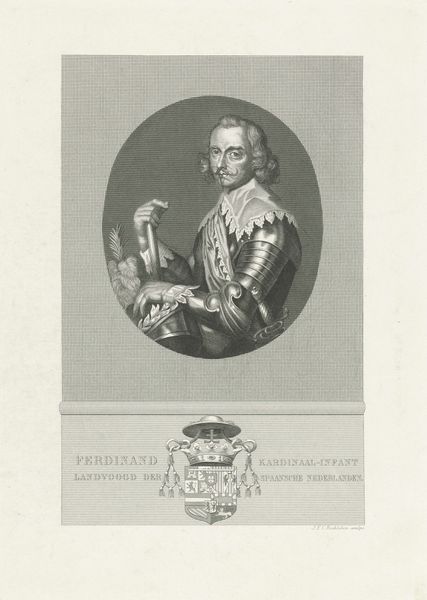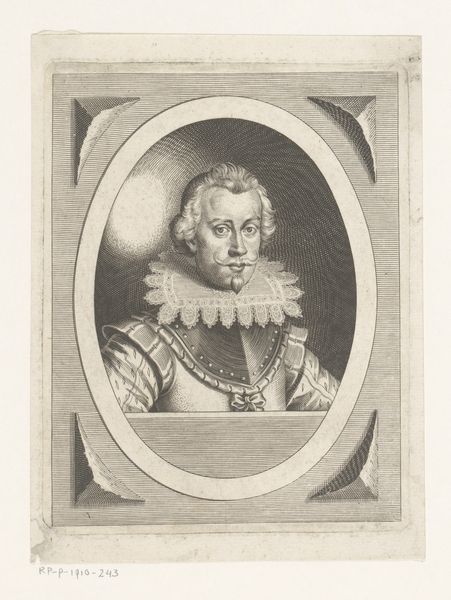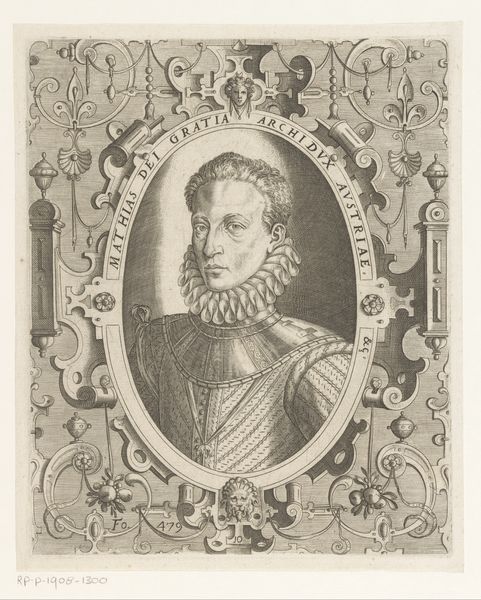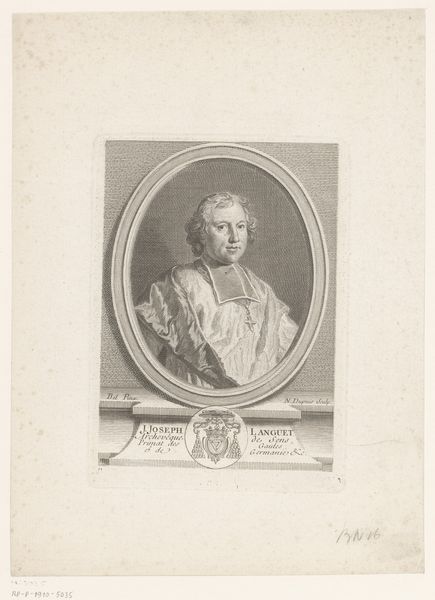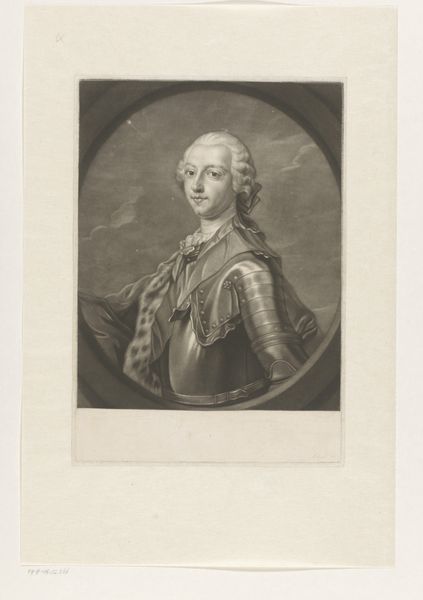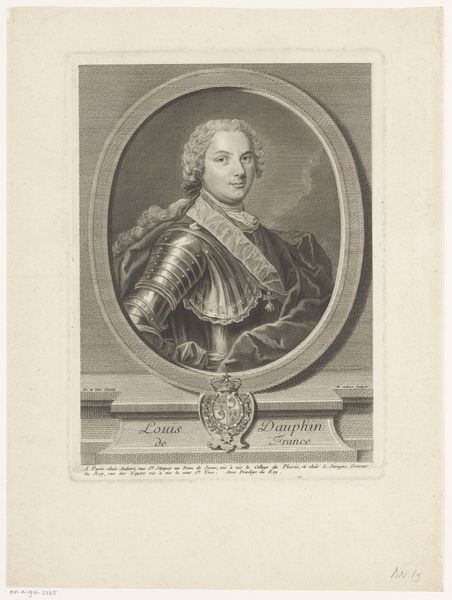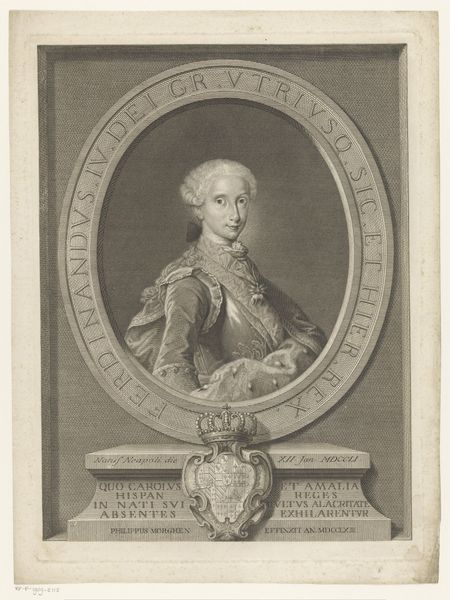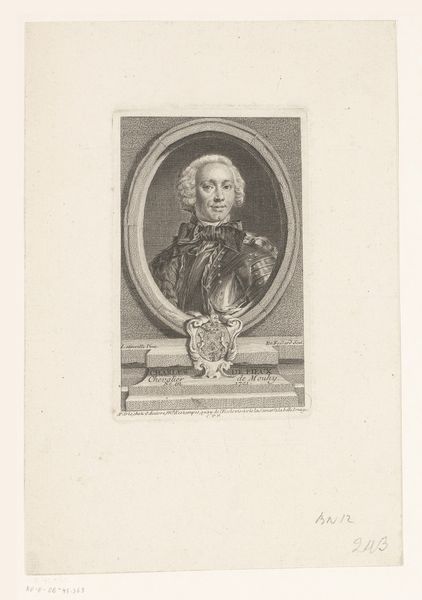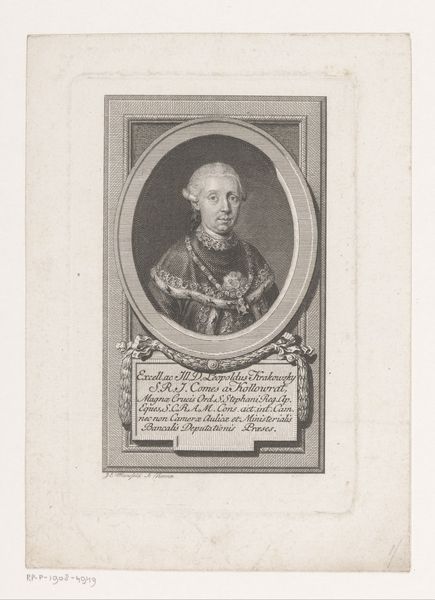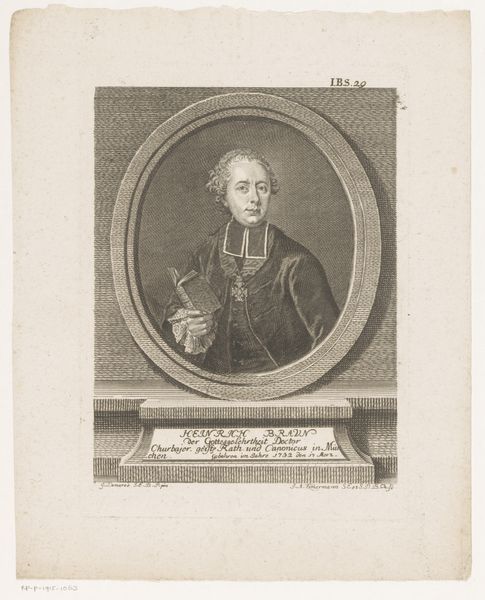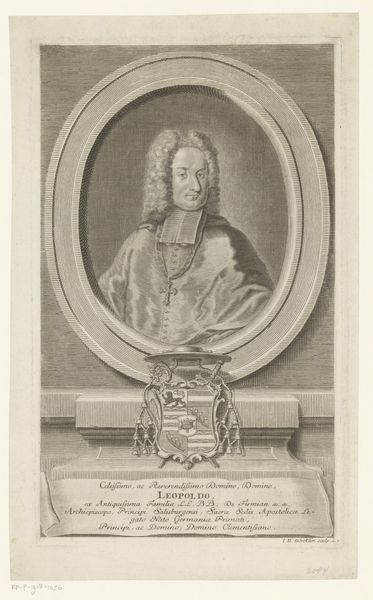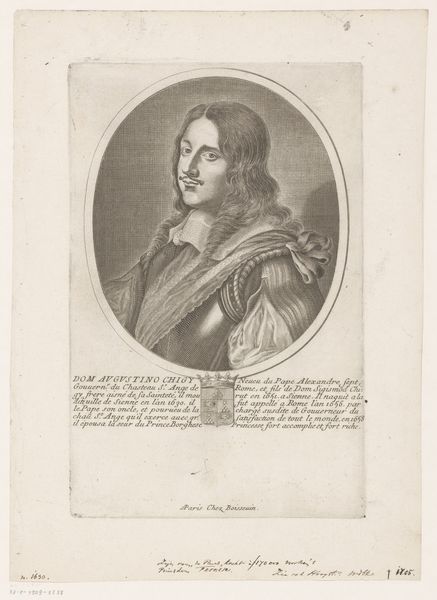
Dimensions: height 232 mm, width 150 mm
Copyright: Rijks Museum: Open Domain
Editor: This is a portrait of Philip Sidney, made between 1853 and 1855 by Jan Frederik Christiaan Reckleben. It’s an engraving currently held in the Rijksmuseum. He's wearing armour, but the style of the portrait seems older than the date it was made – more Renaissance than mid-19th century. How would you interpret this portrait? Curator: Indeed! Look closely at the image's structure and symbolism. Notice the oval frame – it evokes classical cameos. Then, below, the heraldic shield featuring a single, bold geometric device beneath a helm. This all points to an attempt at portraying timeless nobility and valor. How does the geometric form in the coat of arms strike you, in relation to the subject’s likeness? Editor: It feels surprisingly modern against the traditional elements, almost like an arrow pointing downwards. Curator: Exactly! The downward-pointing 'arrow' is actually a pheon, a heraldic arrowhead which represents military prowess, but could suggest a more metaphorical trajectory: duty, sacrifice, legacy... Given Sidney's fame as a poet, courtier, and soldier, what feelings do these layered symbols generate? Editor: It gives a strong sense of history and tradition, but also a bit of melancholy. I guess Reckleben was trying to say something about Sidney’s life being about sacrifice or even mortality. Curator: Yes, perhaps. And consider too how artists working long after Sidney's death used his image to promote particular ideals - the image functions not simply as a likeness, but as a cultural artifact laden with complex meaning, constantly re-evaluated. Reckleben clearly evokes the visual memory of a heroic, courtly ideal of Renaissance England, one appealing to a 19th-century sensibility. Editor: That makes so much sense! It's like the portrait’s a window into how different eras understand the past. Thank you!
Comments
No comments
Be the first to comment and join the conversation on the ultimate creative platform.
